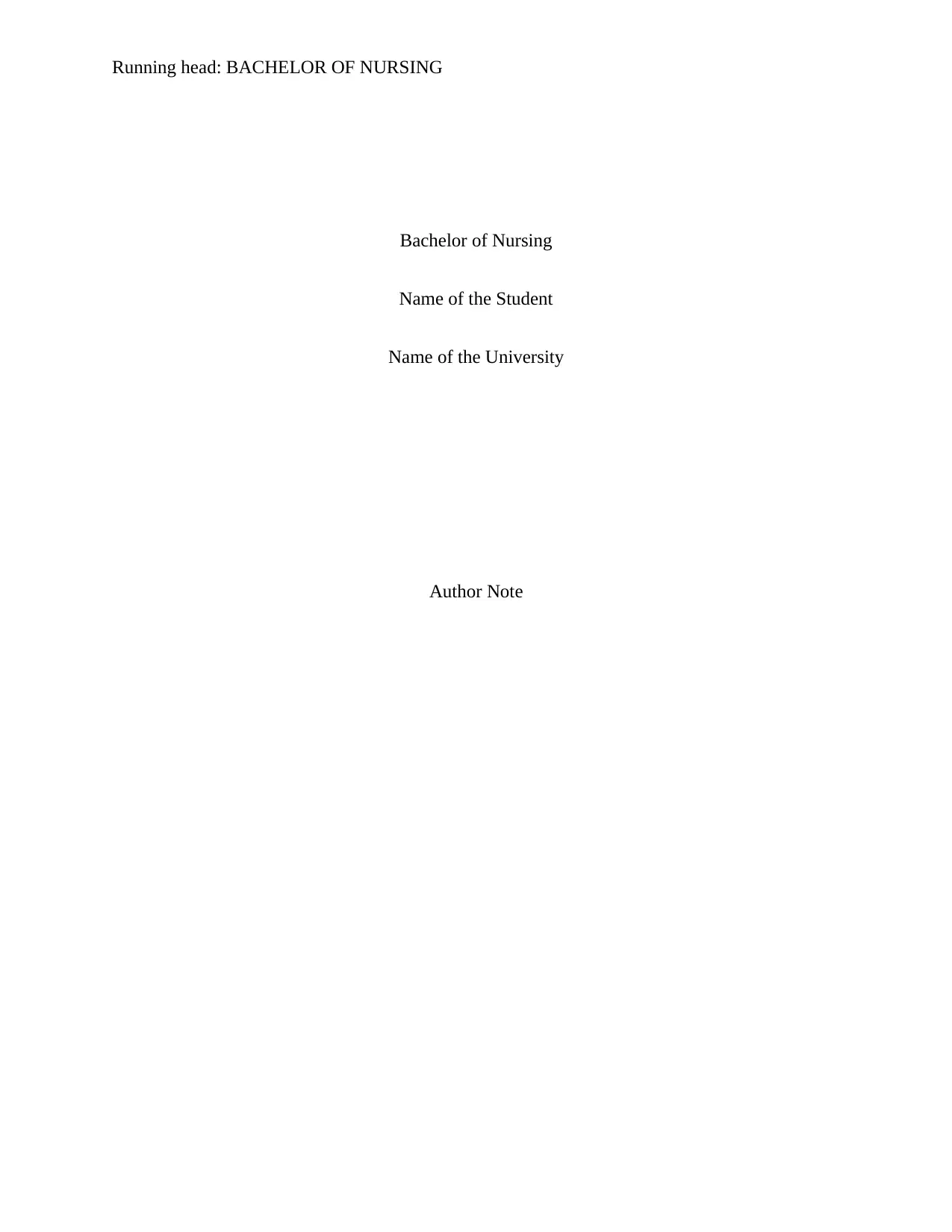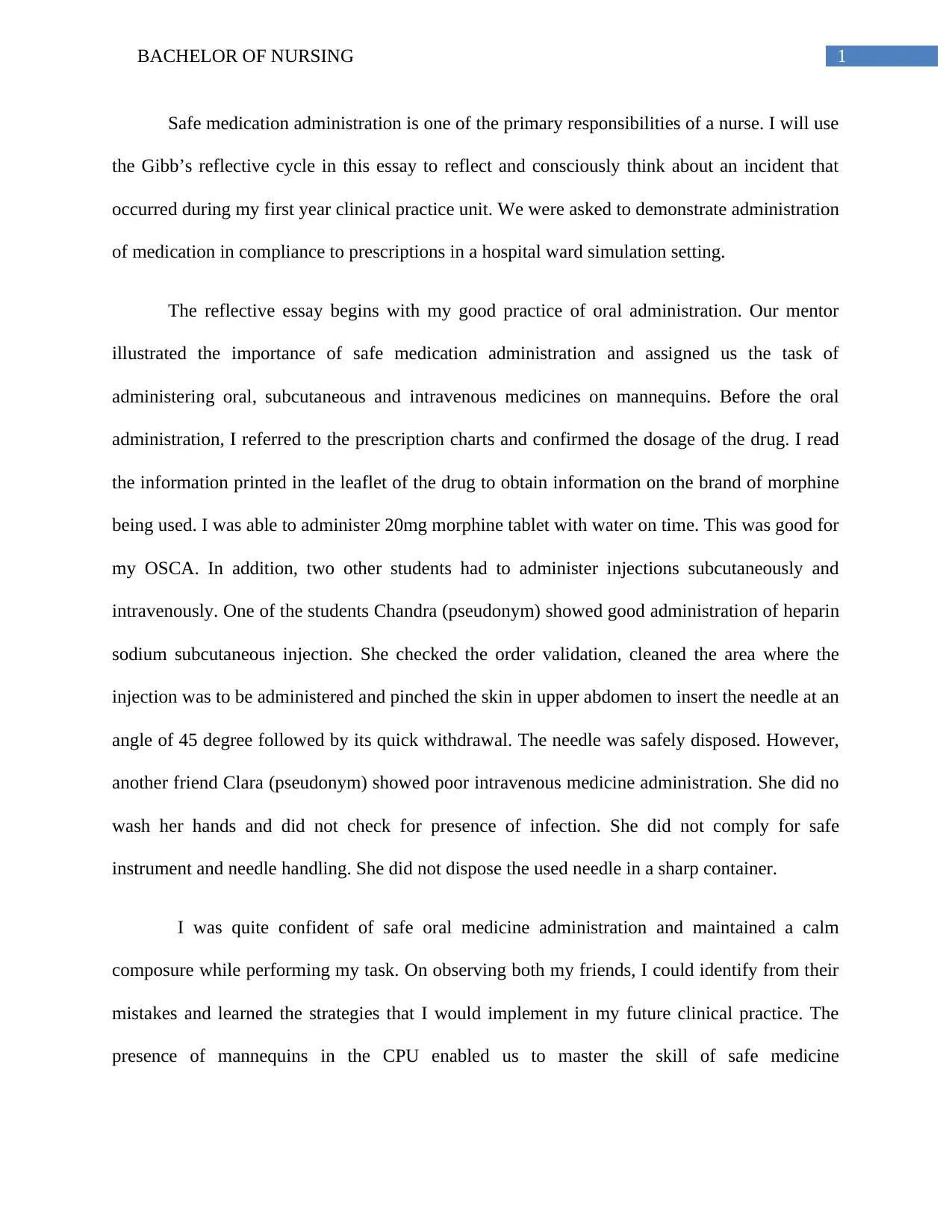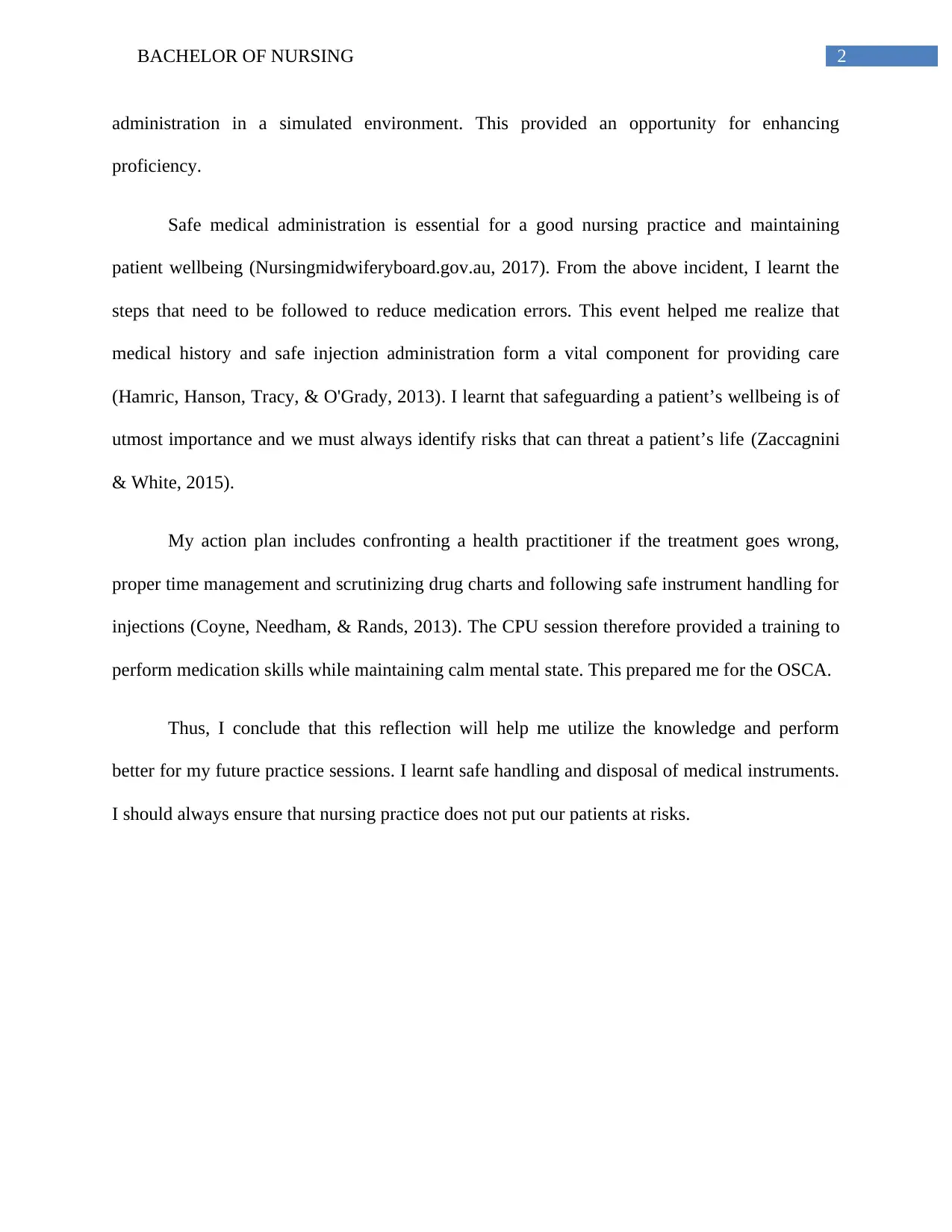Reflective Essay on Safe Medication Administration in Nursing Practice
VerifiedAdded on 2020/03/16
|4
|739
|43
Essay
AI Summary
This reflective essay, written by a Bachelor of Nursing student, explores an incident encountered during a clinical practice unit. The essay utilizes the Gibbs reflective cycle to analyze the student's experience with medication administration, focusing on oral, subcutaneous, and intravenous methods. The student reflects on their own practice, highlighting adherence to safe medication protocols, and contrasts it with observations of peers' performances, noting both good practices (e.g., subcutaneous injection) and errors (e.g., improper intravenous administration). The essay emphasizes the importance of safe instrument handling, patient well-being, and the need to identify and mitigate risks. The student outlines an action plan that includes time management, scrutiny of drug charts, and proper instrument handling. The conclusion underscores the value of the reflective process in enhancing future practice and ensuring patient safety. The essay also references key literature on nursing practice and medication safety.
1 out of 4











![[object Object]](/_next/static/media/star-bottom.7253800d.svg)